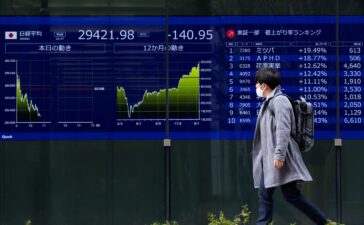04 January 2024

The new-car markets in France, Italy and Spain all recorded positive registration results in December. However, two markets struggled to inspire drivers to consider battery-electric vehicles (BEVs).
Each country ended 2023 by posting growth over the 12-month period compared with a troubled 2022. This suggests that the industry’s recovery from COVID-19 and the supply-chain crisis is progressing well.
With supply-chain disruptions decimating automotive markets in the first half of 2022, growth was expected in 2023. France, Spain and Italy even posted improvements against those months in 2022 when deliveries accelerated as bottlenecks cleared. However, each market remained down on 2019, the last full year before disruptions took hold.
Both Italy and Spain saw their battery-electric vehicle (BEV) registrations improve year on year. However, the market share recorded in these countries was well below the EU average. This highlights the need for improvements in 2024 to help reduce CO2 emissions.
BEVs flourish in France
The new-car market in France recorded registrations growth of 14.5% in December, with data from the CCFA revealing that 181,011 units were delivered to customers.
The French new-car market has posted double-digit increases since March. Its weakest performance was at the beginning of 2023, with an 8.8% rise in January. Since then, the country has seen registrations push forward, even improving on months of growth in 2022.
This allowed the sector to close out 2023 with a 16.1% increase in registrations across the 12-month period, with 1,774,729 deliveries. However, the country was 19.9% down on the total recorded in 2019.
BEVs achieved their best-ever market share in December, according to data from the PFA. The powertrain accounted for 21% of new-car registrations, equating to around 38,000 units. Plug-in hybrids (PHEVs) took a 9% share, around 16,290 units.
This means electric vehicles (EVs) made up 30% of deliveries in December, in line with the best-ever share total from November. Across 2023, EVs took a market share of 26%. With 301,704 units, BEVs accounted for 17%, while PHEVs were responsible for 9% of registrations with 159,725 deliveries.
French ecological decree
The French Government published a new decree in December, listing the models eligible for the 2024 ecological bonus. This new system takes into account a vehicle’s entire carbon footprint when considering incentive inclusion.
The updated list drops several models that were previously eligible for the bonus. This includes vehicles built in China, such as the MG4 and BYD Atto 3, as well as some Tesla models.
A report from AAA Data suggests that if applied to registrations from January to November 2023, more than 100,000 deliveries would fall outside the scope of the new bonus. Meanwhile, in 2024, just 41% of EV sales would benefit, down from 80% in 2023.
Meanwhile, domestic carmakers Renault and Stellantis, through its Peugeot and Fiat brands, would be the big winners. Many of their vehicles would remain in the scope of the new bonus, while rivals would become more expensive without the incentives.
Italy reports resilience
Italy experienced its weakest month of the year in December, with a 5.9% rise in registrations equating to 111,111 units delivered, according to industry body ANFIA.
The country has performed well at times in 2023. In March, registrations grew by 40.7%, although compared with the supply-chain crisis period in 2022 when deliveries were significantly impacted.
This means the country finished the year up 18.9% overall, with 1,565,331 passenger-car registrations. While a significant improvement, the market was down 18.3% across the whole year when compared with 2019.
However, ANFIA states that if the country is to reduce the average age of its car parc, which sat at 12.5 years at the end of 2022, it needs to achieve annual registrations of over 1.8 million units. This is crucial for the country if it is to reduce its average CO2 figures from passenger cars, especially as over half of the models on the country’s roads are pre-Euro 5.
When it comes to the performance of different powertrains, Italy differs slightly from other big markets. Hybrids, including mild hybrids, were the most popular drive technology. In December, hybrids increased their deliveries by 6%, meaning the technology ended 2023 up by 25.4%, with a market share of 36.1% across the year.
Petrol registrations improved in December by 24.9%, while in 2023 the fuel was up 22.4%, taking a market share of 28.6% over the year, an improvement on 2022’s figure of 27.8%. Like most other markets, diesel saw a decline in December, with figures down 19.7% year on year. However, Italy saw diesel deliveries improve across the 12 months, rising by 6%.
This means that while other markets saw shares of internal-combustion engine (ICE) models fall significantly, the Italian ICE share only dropped by 1.3 percentage points, to 46% in 2023.
Slow electric uptake
Italy’s BEV uptake is also not as advanced as other countries. While it saw a 50.6% improvement in December, the market slowed overall. A rise of 34.8% in the year only equated to a 4.2% market share in the 12 months to December.
Buyers seem to have preferred PHEVs when it came to rechargeable models. However, the powertrain declined by 12.4% in December, ending the year up 6.8% with a market share of 4.4%. There does appear to be a slow shift towards zero-emission mobility, with the BEV share up by 0.5 percentage points, while PHEVs declined by the same amount. Further purchase incentives may help the country boost its EV market.
‘We are in favour of a remodulation of the sales scheme incentives that make them more attractive, from the point of view of the economical contribution, to support the sales of BEVs and PHEVs in line with the decarbonisation objectives set by the European Union and in such a way as to catch up on Italy’s delay in the [BEV] market share, which is just 4% compared to around 15% in the other major European markets,’ ANFIA stated.
Spain improves but misses target
Spain missed its target of one million passenger car registrations in 2023. Its December total of 81,772 units, a 10.6% rise, missed the mark. The country ended the year with a 16.7% rise in deliveries, with 949,359 cars taking to roads, according to industry association ANFAC.
The failure to reach a million registrations also meant the country was further from its 2019 figure, with deliveries across the whole year down 24.5% compared with the pre-COVID-19 era.
‘We close 2023 with growth compared to last year with a market of more than 949,000 new registrations,’ explained Félix García, director of communication and marketing at ANFAC. ‘In 2024, Spain must overcome the barrier of one million passenger cars sold.
‘To achieve this, we must continue promoting measures that encourage citizens to be able to advance in the decarbonization commitments, through the renewal of the fleet and the progressive entry of zero and low-emission vehicles. Citizens must know that now is the time to buy a new car. And even more so if it is electric or plug-in hybrid,’ García added.
Spain’s market in December was driven by electrified vehicles, as ICE models suffered declines. Petrol only saw 28 fewer registrations in the month, with its share taking only a marginal dip. Diesel saw a more significant drop of 26.5%, meaning the total ICE market fell by 7.8%.
Across the year, petrol proved the most popular fuel type, but a sharp decline in diesel registrations, down 15% over the year, meant that the ICE market share fell from a 59.1% share in 2022 to 53.3% last year.
HEVs, PHEVs and BEVs helped the country’s market to grow in the month. HEVs proved the most popular in terms of volume with 27,924 registrations equating to a 24.3% year-on-year improvement. PHEVs saw 6,546 units registered, up 41.3%, while BEVs improved 73.2%, but with just 5,896 units delivered.
This means that while hybrids ended the year with a 31.9% market share, plug-in vehicles struggled. PHEVs were the most popular rechargeable powertrain at 6.5% (up from 5.9%), and BEVs took 5.4% (up from 3.8%). The total EV share ended the year at 12%.
Lack of EV enthusiasm
This lack of EV enthusiasm is a concern for the country. Without a push for plug-in vehicles, it will struggle to reduce average CO2 emissions effectively. The average age of the car parc in Spain was 13.5 years at the end of 2022.
In order to reduce the number of older, more polluting models on the country’s roads, an increase in registrations of zero-emission vehicles is required. With December seeing an overall decline in ICE models, the month could prove to be a turning point.
‘As a sector, we cannot be happy with the result of last year’s registrations, because we have not made progress in the decarbonisation of mobility,’ commented Raúl Morales, communication director of Spanish dealership authority FACONAUTO.
‘On the one hand, EVs have only accounted for 12% of total registrations, very far from the European average, which is around 20%. Meanwhile, the average age of the vehicle fleet has continued to worsen.
‘The year 2024 must be the year of decarbonisation of the fleet, by promoting measures that encourage the registration of electric vehicles and removing older cars from circulation that penalise the current decarbonisation process,’ Morales said.















